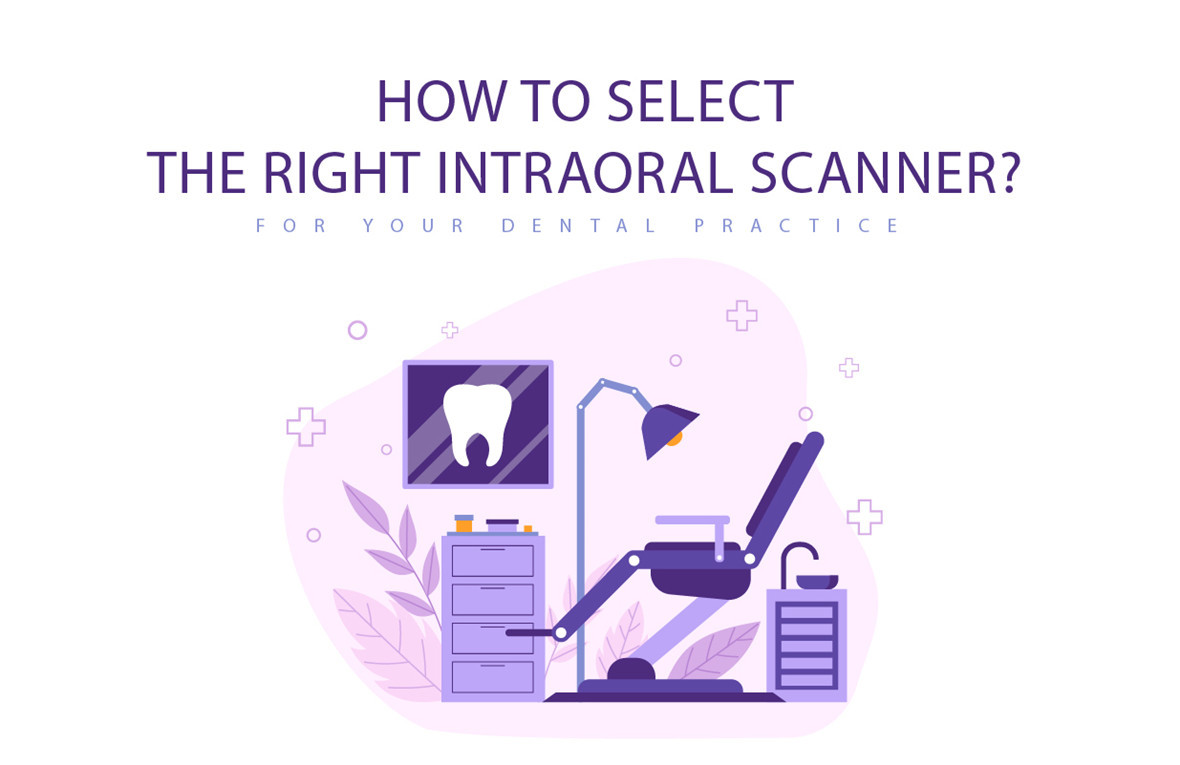
The emergence of intraoral scanners opens up a new door for dental professionals to digital dentistry, transforming the way of creating impression models – no more messy impression materials or possible gag reflex, bringing an unprecedented seamless, fast and intuitive scanning experience. More and more dental practices realize that switching from traditional impressions to digital impressions will bring long-term benefits and high ROI. A digital scanner not only improves patient experience but also greatly enhances the efficiency and accuracy of impression results. Embracing advanced digital solutions is an irreversible trend in the dental industry today. Therefore, choosing the right intraoral scanner is a critical step for your practice to go digital.
However, there are a number of intraoral scanners available on the market. Each brand has its own features and services. Here are some basic criteria you need to consider in order to find the most-fit scanner for your dental practice.
Scanning Speed
Scanning speed is an important factor when choosing an intraoral scanner, and it is a feature that most user will focus on. One of the obvious benefits of a scanner is its overall efficiency-3D digital impression models can be generated in minutes and the completed data can be sent immediately to the lab, reducing the lab turnaround times. A scanner that is fast and easy to use will certainly be more beneficial for clinics in the long run. So, you need to consider the speed of its full arch scan. Many intraoral scanners these days can be done in under one or two minutes.
Scanning Accuracy
Scanning accuracy is a key metric that dentists and dental labs must pay attention to. If the data captured from an intraoral scanner is not accurate, it is meaningless. A scanner with low accuracy will not be able to match its scan data perfectly with the shape of the patient's teeth, resulting in a low fitting rate and the teeth need to be reworked, which can waste a lot of time. That's why choosing a scanner that could produce highly accurate data is your first choice.
Scanning Flow
Not only the speed and accuracy are relevant, but also how smooth the full scanning experience is and how well its supporting software performs. This involves whether the scanner can handle corners and anterior areas well or recover data after losing the scan; whether it stops when moving to another quadrant, etc. When the scan is done, does the software make adjustments and send them to your lab efficiently. If the software is complicated or slow, it will affect the whole experience.
Scanner size
For dentists who perform multiple scans per day, it is necessary to consider the ergonomic design, overall comfort and weight of the scanner. Scanners that are easy to grip, manipulate and lightweight will be used more often. For patients, the size of the scanner tip should be taken into account as it provides more comfortable access to their mouth. The small scanner tip is better suited for scanning molars and buccal surfaces of teeth because of less space constraints, and it will provide a more comfortable patient experience.
Ease of use
An easy-to-use intraoral scanner allows dentists to integrate it naturally into their daily workflow. A seamless process and overall user experience form the basis of this part. Given that hardware and software need to work together, the software should be easy to manage, e.g. whether it can be set up easily and process 3D images quickly. The entire workflow should be smooth from start to finish.
Warranty
A scanner will become an important tool in the daily work of dentists and will be used frequently. A good warranty will ensure that your investment in this digital technology is protected. You can find out what their basic warranty covers and whether the warranty can be extended.

Price
The Prices of Intraoral scanners vary greatly by their dealers, brands, geographical location, and sometimes promotions. Using a digital scanner can greatly reduce time and costs in the long run, you can compare the well-performing scanners to best leverage your budget.
Subscription
Some intraoral scanners on the market require an annual subscription for software updates. You need to consider not only the initial price, but also the operation and maintenance costs. Check if the scanner subscription is free or mandatory.
Training and Support
Digital scanners have a learning curve, so training you and your colleagues to learn how to effectively use the scanner will get the most out of your purchase. A good product must have a nice support team, which reduces the risk of scanner failure or possible damage. Therefore, you need to know what kind of support and training services do they offer, by phone or online.
Choosing the right scanner should depend on many factors such as your budget, the procedure you mainly focus on in your practice, whether that is crowns, bridges, inlays and onlays, implants, veneers, or orthodontic aligners, etc. Digital scanners offer many benefits for dental professionals and patients alike. Different intraoral scanners have their areas of strength, so prioritize your needs and select the one that will most fit your practice. We hope the above makes your decision-making process easier. Let’s go digital!
Post time: Sep-03-2021





